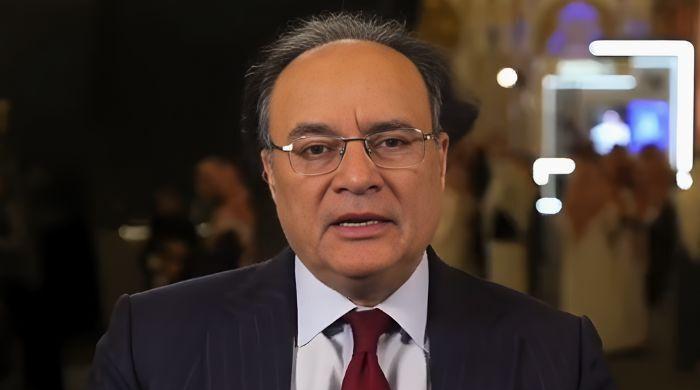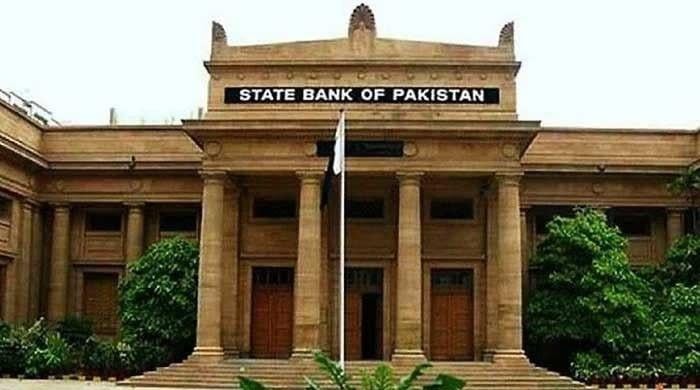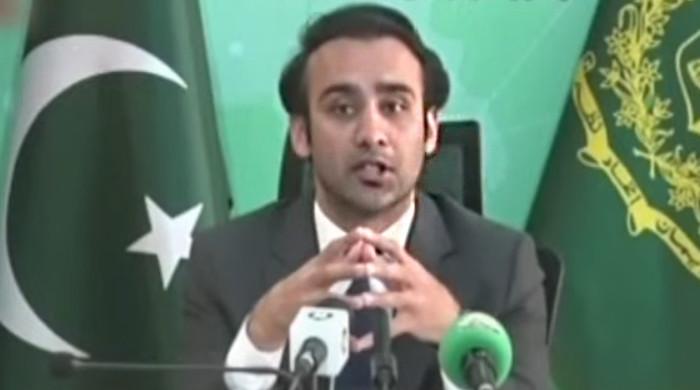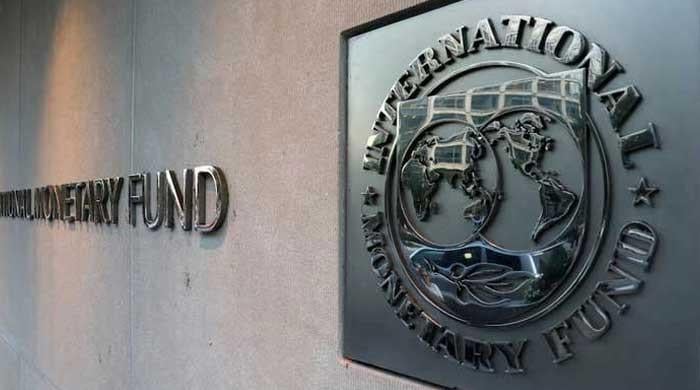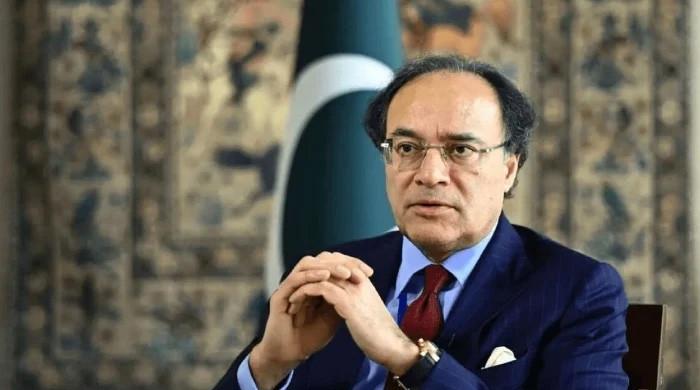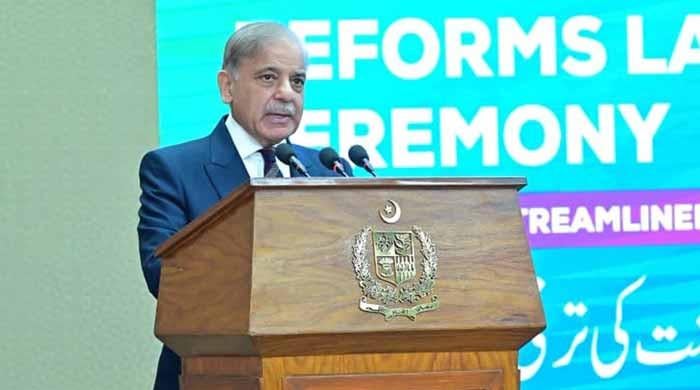World Bank indicates 4% GDP growth for Pakistan in next fiscal year
World Bank report cites Pakistan's preliminary estimate for real GDP growth for outgoing FY — that is 6% — in footnotes
June 08, 2022
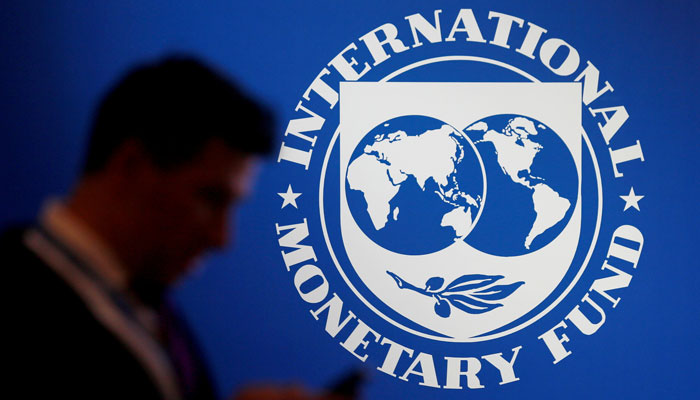
- World Bank report cites Pakistan's preliminary estimate for real GDP growth for outgoing FY — that is 6% — in footnotes.
- Says some regional economies prioritised structural reforms to boost their economic growth.
- Pakistan's central bank raised rates by 4 percentage points since April.
ISLAMABAD: The World Bank (WB) has estimated a moderate Gross Domestic Product (GDP) growth rate for Pakistan standing at 4% for the incoming fiscal year, 2022-23, as compared to the official government-approved projections of 5% for the next budget, The News reported, citing the latest WB report Wednesday.
“In Pakistan, growth is expected to be moderate from 5.7% in FY2020/21 to 4.0% in 2022/23 as foreign demand slows significantly and policy support is withdrawn to contain external and fiscal imbalances,” the report, 'Global Economic Prospects', stated.
The WB has cited Pakistani government's preliminary estimate for real GDP (factor cost) growth for the outgoing FY — that is 6% — in the report's footnotes. It also mentioned that some of the regional economies have prioritised structural reforms to boost their economic growth.
Meanwhile, the Pakistani government has improved its monetary policy framework by reinforcing its central bank's functional and administrative autonomy, which restricts the government from borrowing from the central bank, and entrenching price stability as monetary policy’s primary objective.
Policy rates have been raised by 7 percentage points in response. In India, rising inflationary pressures led to an unscheduled policy rate hike in May. In Pakistan, the central bank has raised rates by 4 percentage points since April. Some authorities have implemented policies to cushion the impact of high inflation. In Pakistan, for example, the government announced an energy price reduction package in February (World Bank 2022). However, gasoline and diesel pump prices were recently increased, it added.
For the region excluding India, stronger-than-expected rebounds from the pandemic in Bangladesh and Pakistan helped to boost activity through early 2022, helping to maintain robust growth during their fiscal year 2021/22, ending June 2022. In Bangladesh and Pakistan, goods exports have grown by over 25% so far this fiscal year (to April), and manufacturing production in both countries has expanded at its fastest pace in at least four years. But the war in Ukraine has dampened activity, as rising food and energy prices have stunted purchasing power and increased uncertainty.
With regard to South Asia, the WB report states that the Russian Federation’s invasion of Ukraine has weighed on growth in the South Asia Region (SAR) after a solid recovery in the second half of last year and amplified pre-existing vulnerabilities.
While the direct impacts from trade and financial exposure to Russia and Ukraine are minimal, spillovers from rising commodity prices, higher borrowing costs and weaker external demand are significant. In India, the recovery is facing some headwinds from accelerating inflation. Rising inflationary pressures led to an unscheduled policy interest rate hike in May.
In the rest of the region, activity has been mixed, with stronger-than-expected rebounds from the pandemic helping to boost growth through early 2022 in Bangladesh and Pakistan. In Sri Lanka and Afghanistan, however, conditions are dire. The government of Sri Lanka announced a cessation of external debt repayments, and the country faces a dual balance of payments and sovereign debt crises. With international reserves down to one-fourth of their pre-pandemic levels, the government abandoned its exchange rate peg in early March, leading to a rapid depreciation of the rupee. Sri Lanka’s unsustainable external debt will require debt restructuring to start the process of fiscal rehabilitation. Despite increased international humanitarian support in Afghanistan, the economy has collapsed, and most households do not have sufficient incomes to meet basic needs.
Rising food and energy prices have led to a rapid increase in consumer inflation in the region. Average annual consumer inflation and one-year-ahead inflation expectations are now at their highest level in almost a decade.
Outlook: Growth in South Asia is forecast to slow to 6.8 and 5.8% in 2022 and 2023, respectively following a robust 7.6% rebound in 2021. This is 0.8 percentage point slower for 2022 than was projected at the start of the year and similar to the average growth in the decade prior to the pandemic. The revisions to growth reflect the expected erosion of purchasing power of consumers, elevated uncertainty and weaker external demand.
In India, growth is forecast to edge down to 7.5% in the fiscal year 2022/23, with headwinds from rising inflation, supply chain disruptions, and geopolitical tensions offsetting buoyancy in the recovery of services consumption from the pandemic. Growth will also be supported by both private and public fixed investment, buoyed by government incentives and reforms to improve the business climate.
In Pakistan, growth is expected to moderate from 5.7% in FY2020/21 to 4.0% in 2022/23 as foreign demand slows significantly and policy support is withdrawn to contain external and fiscal imbalances.
In Bangladesh, growth is forecast to ease to 6.4% in FY2021/22, as pent-up demand subsides, before picking up to 6.7% in 2022/23 as investment recovers and remittance inflows accelerate. The outlook for Sri Lanka is highly uncertain and subject to significant downside risks.
Risks: Risks to the regional growth outlook remain to the downside and have been magnified by geopolitical developments. Additional increases in commodity prices, particularly wheat, could put further upward pressure on food prices eroding real incomes and reducing consumption. The region consumes about one-fifth of its calories from wheat products, houses more than one-third of the global poor, and food accounts for a greater share of its consumption basket compared to other emerging and developing economies. Rising energy prices, in a region that is highly dependent on energy imports and in some economies where significant shares of government budgets go to subsidies, could further increase inflation, worsen current account positions, and divert resources away from productivity-enhancing investment and social protection.




